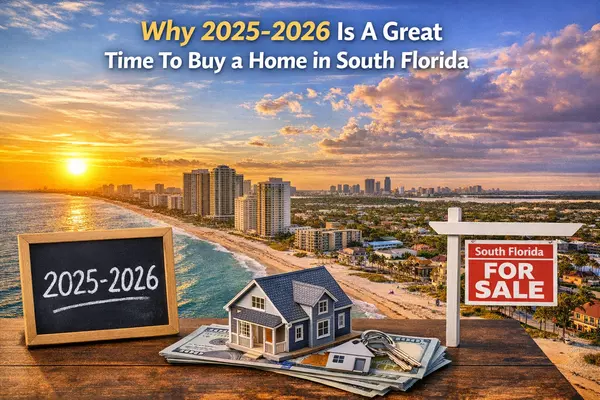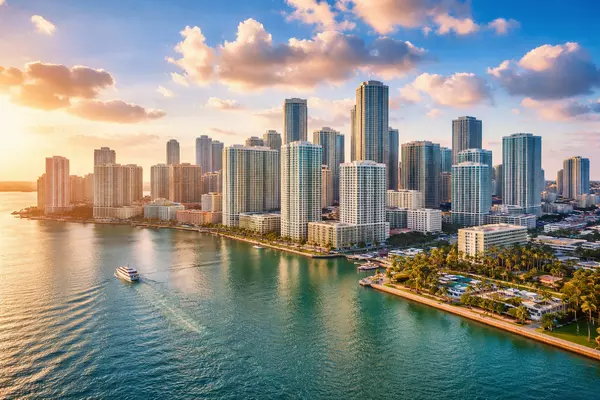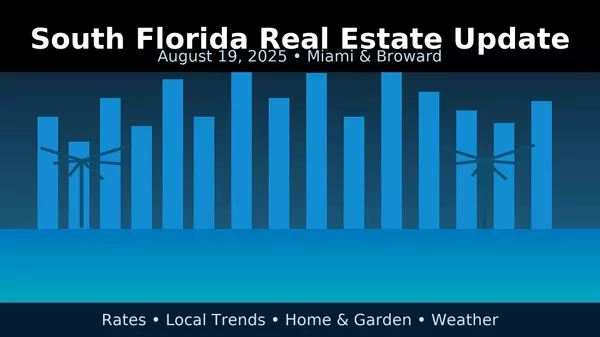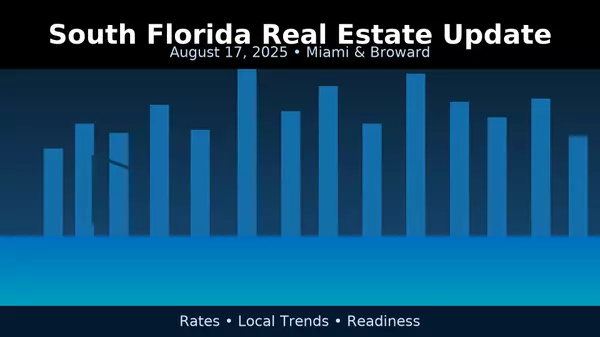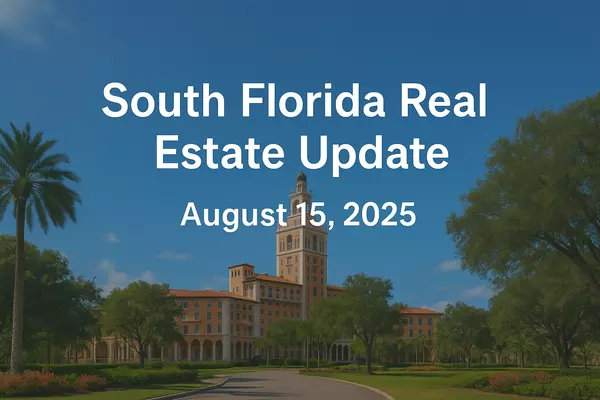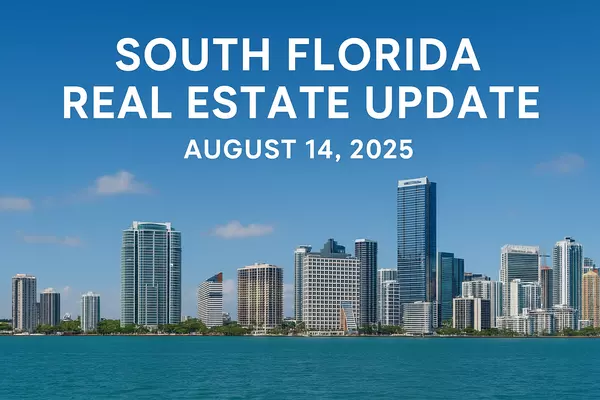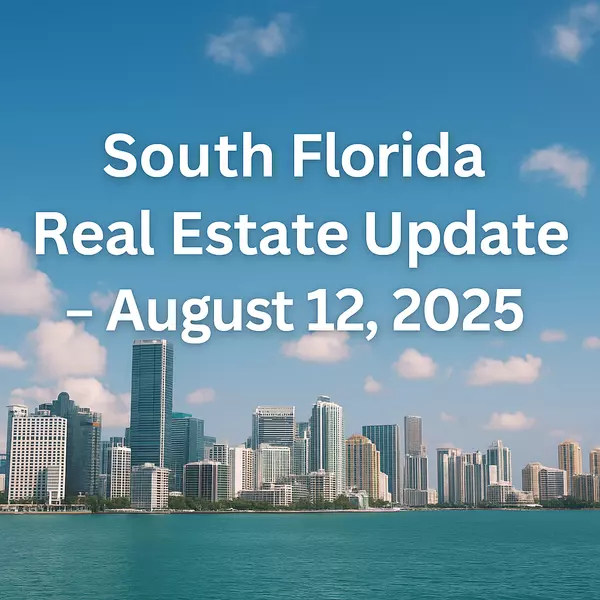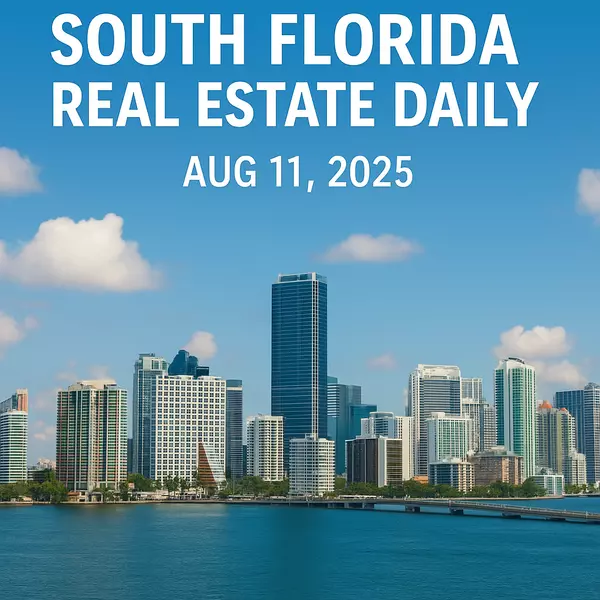Why The Real Estate Market Is Not Going To Collapse Like In 2008, What Are The Differences Between 2024 And 2008?
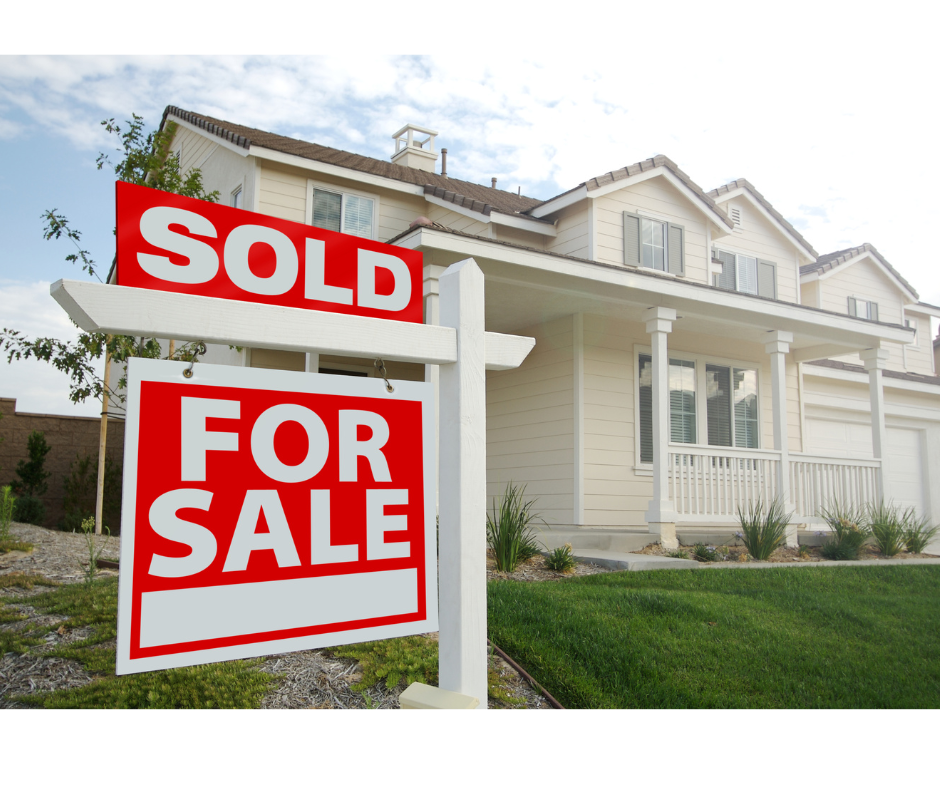
You've heard it now for the last four years. The housing market is going to collapse. The sky is going to fall. Everybody is going to lose everything. And every year since then, prices have continuously and steadily gone up. Why is that? Why are foreclosure rates still at an all time low? What is the difference between todays housing market and the one that led up to the collapse in 2008?
The housing market has always been a cornerstone of the American economy, serving as a critical indicator of the nation's financial health and stability. As we journey through the ebbs and flows of real estate trends, it becomes essential to analyze the stark contrasts between the current housing landscape and the tumultuous period leading up to the 2008 collapse. Specifically, focusing on the Miami housing market offers a unique lens through which to examine these differences, shedding light on shifts in the economy, lending practices, and overall market dynamics.
The Pre-2008 Era: A Prelude to Crisis
Before the 2008 financial collapse, the real estate market was riding the crest of what many considered an invincible wave, with Miami's market serving as a prime example of this unprecedented boom. This period was characterized by several key factors that, in hindsight, were clear indicators of an impending crisis.
Easy Lending Practices
The accessibility of mortgage loans during this time was unprecedented. Banks and financial institutions offered mortgages with minimal, if any, scrutiny of borrowers' financial stability or ability to repay the loans. This era was notably marked by the proliferation of subprime loans, which targeted individuals with poor credit histories who were traditionally not considered eligible for mortgage lending. These practices were not limited to obscure financial entities but were widespread across the lending spectrum, including major banks.
The rationale behind such easy lending practices was twofold. First, there was a misplaced confidence in the perpetual rise of real estate values, suggesting that even if borrowers defaulted, the properties could be sold at a higher price. Second, the financial instruments tied to these mortgages, such as mortgage-backed securities, dispersed the perceived risk across the broader financial system, obscuring the potential for systemic failure.
Speculative Investments
The real estate market of the pre-2008 era was not just buoyed by genuine homebuyers but was significantly driven by speculative investments. Investors engaged in property flipping, buying properties with the sole intention of reselling them at a profit in the short term. This speculative frenzy was fueled by the easy availability of credit and the expectation that property values would continue to climb indefinitely.
In markets like Miami, known for their attractiveness to investors and luxury property buyers, this led to an unsustainable bubble. Properties were often bought and sold multiple times even before construction was completed, dramatically inflating prices beyond the actual value or demand.
Rapid Price Appreciation
Home prices during this period soared at an unprecedented rate, driven by high demand, speculative buying, and an abundance of cheap credit. The rapid price appreciation detached home prices from fundamental economic factors such as average income levels or the actual housing demand based on population growth.
This detachment from economic realities created a precarious situation where home prices were no longer supported by genuine buyer capacity or demand but by speculative trading and lending practices that assumed prices would continue to rise indefinitely. This scenario was particularly acute in Miami, where the real estate market's vibrancy attracted both domestic and international speculators, further exacerbating the price bubble.
Setting the Stage for Collapse
This period of unchecked growth, characterized by lax lending standards, speculative investment, and rapid price appreciation, created a volatile mix that was unsustainable in the long run. The reliance on continuous market growth to sustain these practices ignored the fundamental principles of supply and demand, as well as the financial stability of borrowers.
When the bubble burst, it led to a dramatic collapse in home prices, leaving many homeowners with properties valued far less than their mortgages. The widespread foreclosures that followed had a profound impact on the economy, leading to the loss of homes, savings, and livelihoods for millions of Americans. Miami, with its high concentration of speculative real estate activity, was one of the markets most severely affected by the collapse, experiencing a dramatic downturn in property values and a surge in foreclosure rates.
This era serves as a cautionary tale of what can happen when market exuberance overshadows financial prudence, highlighting the need for sustainable lending practices and a balanced approach to real estate investment.
The Current Landscape: Lessons Learned
The landscape of today's housing market is a testament to the resilience and adaptability of the real estate sector, shaped significantly by the lessons learned from the tumultuous era leading up to the 2008 financial collapse. Notably, the market has evolved to operate under a new set of norms that prioritize financial stability, sustainable growth, and technological advancement.
Stricter Lending Practices
In the aftermath of the financial crisis, a concerted effort was made to overhaul the regulatory framework governing lending practices. This led to the implementation of stricter lending standards designed to ensure that borrowers have the financial capacity to repay their loans, thereby reducing the risk of defaults. Key measures included the introduction of more rigorous credit checks, verification of income and assets, and a closer assessment of borrowers' debt-to-income ratios.
These reforms were aimed at curtailing the reckless lending practices that had contributed to the crisis, marking a significant shift towards responsible lending. In markets like Miami, where the impact of the crisis was deeply felt, these changes have helped restore confidence in the mortgage system and have been pivotal in stabilizing the housing market.
Economic Diversification
The economic landscape, both nationally and within specific markets such as Miami, has undergone considerable diversification since the pre-2008 era. This diversification has reduced the economy's dependence on the real estate sector, providing a more stable foundation that can better withstand fluctuations in the housing market.
In Miami, for instance, sectors such as tourism, international trade, finance, and technology have grown in significance, contributing to a more balanced and resilient economy. This economic broadening has not only provided a buffer against potential real estate downturns but has also contributed to a more robust job market, supporting demand for housing from a position of economic strength.
Technological Integration
The integration of technology into the real estate sector has revolutionized how transactions are conducted, enhancing efficiency and transparency. From virtual tours that allow buyers to explore properties remotely to blockchain technology that secures transactions, the digital transformation of the real estate market has made it more accessible and transparent.
Platforms that aggregate real-time data on listings, pricing, and market trends have empowered buyers, sellers, and investors with information that was previously difficult to obtain. This technological integration has facilitated smoother transactions, broader market access, and greater trust in the real estate process, reflecting a significant advancement from the pre-crisis era.
Market Resilience
Today's housing market exhibits a level of resilience that reflects a healthier balance between supply and demand, underpinned by sustainable growth rates. Unlike the speculative bubble that characterized the pre-2008 market, current price appreciation tends to align more closely with economic fundamentals, including income levels and employment rates.
This alignment ensures that growth in the housing market is supported by genuine demand and economic capacity, rather than speculative investment. In Miami, this resilience is evident in the market's robust recovery and growth following the downturn, attracting a diverse range of buyers and investors drawn to the city's vibrant culture, favorable climate, and economic opportunities.
The transformation of the housing market from the pre-2008 era to today is a reflection of the industry's ability to adapt and learn from past mistakes. The introduction of stricter lending practices, economic diversification, technological integration, and an emphasis on market resilience have all played critical roles in shaping a more stable and sustainable real estate landscape. As the market continues to evolve, these pillars will remain essential in ensuring the long-term health and stability of the real estate sector.
Economic Underpinnings: Then and Now
The economy leading up to the 2008 collapse was heavily leveraged, with high levels of debt fueling real estate investments. Today, the economic landscape is more robust, with stronger regulatory frameworks in place to safeguard against systemic risks. The focus has shifted towards ensuring economic growth is balanced, sustainable, and inclusive.
Lending Practices: A New Era of Responsibility
One of the most significant changes post-2008 is in lending practices. The era of "no-document" loans and adjustable-rate mortgages that contributed to many borrowers' inability to keep up with payments is behind us. Lenders are now more cautious, prioritizing the borrower's ability to repay, which has cultivated a healthier lending environment and a more stable housing market.
Miami's Housing Market: A Case Study in Resilience
Miami's housing market has always been at the forefront of real estate discussions, known for its luxury properties and as a hotbed for international investors. The post-2008 market recovery in Miami showcases the city's resilience and adaptability. Today, Miami benefits from a more balanced market, supported by a strong influx of domestic and international buyers who are attracted not just by the lifestyle but by the economic opportunities the city offers. The focus has shifted towards long-term investments rather than speculative short-term gains.
Banks Are Helping People Stay In Their Homes,Banks and Homeowner Support Post-2008
Stricter Lending Practices and Pre-emptive Support
Since the 2008 crisis, banks have implemented stricter lending practices, including more thorough background and financial checks. This upfront diligence helps ensure that borrowers are more likely to afford their mortgages long-term, reducing the risk of future defaults.
Modification Programs
Banks now offer various loan modification programs that weren't as prevalent before 2008. These programs can adjust the terms of a mortgage to reduce the monthly payment, either by lowering the interest rate, extending the term of the loan, or even forgiving a portion of the principal in some cases.
Forbearance and Repayment Plans
For homeowners experiencing temporary financial hardship, banks offer forbearance plans, allowing them to pause or reduce payments for a specified period. Following this period, repayment plans can be arranged to catch up on missed payments in a way that is manageable for the homeowner.
Government-Backed Programs
Post-crisis, there have been several government-backed initiatives aimed at helping homeowners avoid foreclosure. Programs like the Home Affordable Modification Program (HAMP) and the Home Affordable Refinance Program (HARP) were designed to provide struggling homeowners with more affordable, sustainable mortgage terms.
Direct Outreach and Counseling Services
Many banks now proactively reach out to homeowners who may be at risk of defaulting on their mortgages. They also often partner with non-profit organizations to offer counseling services to help homeowners navigate their financial difficulties and explore options to stay in their homes.
The Miami real estate market has seen significant price increases over the last four years, driven by various factors. Despite the adjustment to higher interest rates, now closer to 7%, the dynamics underpinning the market suggest that home prices in Miami are unlikely to decrease significantly in the near future. Here's an updated overview considering the current interest rate environment.
Factors Driving Price Increases in Miami's Real Estate Market
-
High Demand from Domestic and International Buyers: Miami's appeal to both domestic and international buyers remains strong, fueled by its desirable climate, vibrant culture, and strategic location. This sustained demand, even in a higher interest rate environment, continues to exert upward pressure on prices.
-
Limited Inventory: The scarcity of available properties, due to geographical constraints and the slow pace of new construction, remains a critical factor. This limited supply in the face of ongoing demand supports higher prices, despite the cost of borrowing increasing.
-
Impact of Higher Interest Rates: While the increase in interest rates to around 7% has made mortgages more expensive, the demand in Miami's real estate market has shown resilience. Many buyers in Miami are cash purchasers, including international investors and affluent individuals seeking luxury properties, somewhat insulating the market from interest rate hikes.
-
Remote Work Trends: The adoption of remote work allows individuals to relocate to desirable areas like Miami without commuting concerns. This trend continues to bring new residents to the area, bolstering demand for homes despite higher financing costs.
-
Economic Resilience and Growth: Miami's economy, with its growth in tech, finance, and tourism, attracts professionals and investors, sustaining its real estate market. The city's economic diversification acts as a buffer against downturns, even when borrowing is more costly.
-
Lifestyle and Climate: The lifestyle and climate appeal of Miami ensures a steady influx of buyers looking for vacation homes or permanent residences. This enduring attractiveness helps maintain demand and supports home values.
Why Home Prices Are Not Going to Go Down Signifigantly
-
Persistent Demand: The factors attracting buyers to Miami, such as its lifestyle, economic opportunities, and tax advantages, remain compelling. High interest rates have not eradicated the fundamental and lifestyle-driven demand for Miami's real estate.
-
Supply Constraints: The ongoing issue of limited housing supply is unlikely to be resolved swiftly, ensuring that the demand continues to outpace the availability of homes, which supports current price levels or even leads to increases.
-
Adaptation to Economic and Interest Rate Changes: While higher interest rates typically cool demand by making borrowing more expensive, Miami's market is somewhat shielded by the prevalence of cash transactions and the city's appeal to affluent buyers and investors.
-
Real Estate as an Investment: Despite higher interest rates, real estate in prime locations like Miami is still seen as a valuable asset, offering potential for appreciation and serving as a hedge against inflation.
The Wait-and-See Dilemma
For buyers on the fence, waiting for a significant drop in prices, the current market dynamics offer a cautionary tale. The enduring appeal of Miami, coupled with structural factors like limited supply and sustained demand, suggests that waiting for a substantial decrease in prices may result in missed opportunities. While prices might not escalate at the rapid pace seen in recent years, the factors that have driven prices up are still very much in play.
The expectation that Miami's real estate prices will significantly decrease in the near future may not align with the reality of the market's underlying fundamentals. The combination of high demand, limited supply, and the city’s enduring appeal as a place to live and invest makes the current price levels appear to be more of a new normal rather than a peak waiting to drop. For those waiting on the sidelines, it may be worth considering that the cost of waiting could exceed the benefits, especially if the anticipated price correction does not materialize as expected.
In summary, the adjustment to higher interest rates has introduced new dynamics into Miami's real estate market. However, the combination of sustained demand, limited supply, and the city's intrinsic appeal suggests that home prices are unlikely to see a significant downturn. The market's resilience, supported by both fundamental factors and the city's lifestyle allure, positions Miami's real estate to remain robust in the face of changing economic conditions.
Categories
Recent Posts


